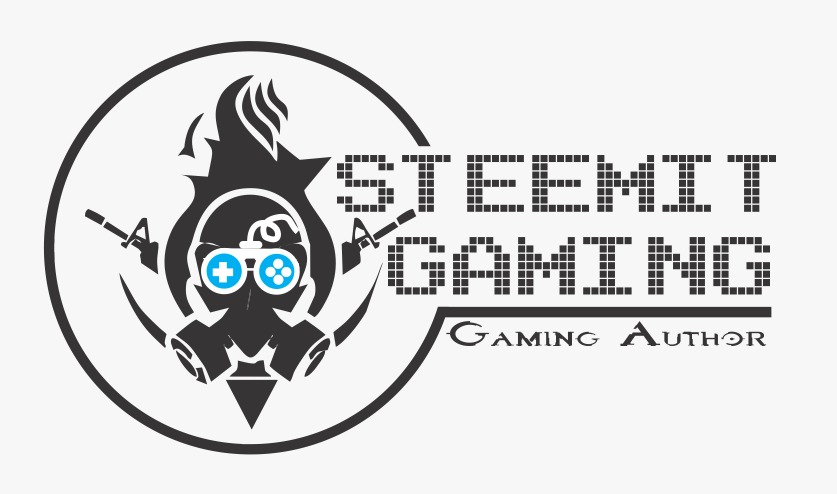Game Review | Xenoblade Chronicles 2 Review | PC [ENG]
Hello everyone. Back again with me @ muhammad23 and this time I will review is a game that is still a PC, and this game is an RPG game where this game is something that in our fantasy as a human being where this game every human beings met with starring animals. a sea of clouds, can also be called "World Alrest". Immediately I discussed his game!

Game Xenoblade Chronicles 2 is every bit as fantastical as you'd hope, an RPG set in a massive world where man and animal live on the backs of tremendous beasts in a sea of clouds. The world of Alrest, simultaneously Earthly and alien, with a mysterious history that even its major players fail to truly understand, is a magical place to inhabit. It appropriately sets the stage for an epic adventure that gets more interesting as it develops, but this greatness comes after dozens of hours filled with eye rolls and bewilderment. For all the good things Xenoblade 2 eventually introduces, the 80-plus hours it takes to complete the story won't feel like time wasted, but the bad taste of the its lesser qualities is never completely washed away. The cliched hero Rex is a naive and upbeat salvager who gets wrapped up in contract work with the game's soon-to-be villains at the start. They seek a legendary sword, which in this case is the weapon-manifestation of a human-like being known as a Blade. When a human resonates with a Blade, as Rex does with his objective, Pyra, a lifelong partnership forms. Though sentimental to a point, these bonds are also a bit lopsided as Blades are forever bound to serve their masters. Xenoblade 2 does address this as the story unravels, one of the few smart instances when the game puts itself to task. Rex doesn't quite enjoy the same full-circle maturation, sadly, though his positivity at least grows more welcome as stakes rise and other characters' outlooks sour.

Rex and Pyra seek Elysium, a sort of paradise atop a towering tree running through the center of Alrest. They partner with a small selection of comrades from different walks of life who surprisingly have more in common than they initially realize. You can only ever travel as a party of three, but with a Blade standing behind each character, or Driver, battles are frenzied displays. Still, Xenoblade 2 gives you a chance to breathe and strategize during its real-time bouts. Every character will dish out basic attacks automatically, which in turn fuel more advanced skills. You only ever have complete control over one character, but your allies will chime in with requests to perform certain moves. How you manage this process, and the numerous other battle mechanics, can make or break your success against the game's tougher enemies. One of the major issues with Xenoblade 2 is that it fails to adequately educate you, with fly-by tutorials introducing cascading mechanics and terminology that's easy to mix up. The flow of combat works as follows: your auto attacks fill up a meter tied to abilities known as arts, arts fuel another meter for special attacks, special attacks can be linked from one character to the next to build up a Blade combo, Blade combos seal away certain enemy abilities, and team chain attacks--based on a meter that is also used to revive fallen teammates--can break these seals to create an elemental explosion that deals hefty damage, which successfully extends the chain attack for another round. Enemies can also be forced into tiers of vulnerability by breaking their defense, toppling them to the ground, launching them into the air, and smashing them back down, provided you execute these moves with abilities linked to cooldowns that you've hopefully kept track of, all before countdown timers close your window of opportunity. There are other systems that exist on a per-character basis, but those exclusions notwithstanding, there's already a lot to keep track of. Success comes from managing timers and meter charges and firmly grasping your available options, the latter of which is more demanding than the game initially lets on.

Thankfully Xenoblade 2 feels appropriately balanced to account for its learning curve. It's not until later in the game that mastery becomes paramount. The frustration arises, however, from the lack of reference material, which makes your desire to improve, or your ability to chase hidden paths with dangerous enemies and great rewards, difficult to realize at first. Take screenshots when the game presents you with a tutorial, because once you move to the next text bubble, that info is otherwise lost. The only other recourse is to purchase bite-sized tips from informants throughout the game, though linking partial tutorials to a merchant is hardly user-friendly, and they don't adequately cover the breadth of Xenoblade 2's mechanics.

Merchants in general even manage to be confusing at first, as one location will cram as many as a dozen in a small area. Characters can carry items in special pouches that buff certain stats, such as meter generation, and while some are incredibly useful to the point of eliminating the need to grind, it's a slow process to familiarize yourself with the dozens of options available to you, and the numerous merchants that specialize in one category apiece. This also extends to a vast selection of accessories for characters and Blades, which are difficult to keep track of and compare given the game's mediocre item-management interface. Variety is good, but Xenoblade 2 throws you into the deep end a bit too early for you to appreciate the value of everything at your disposal.
To build a formidable team, you're encouraged to regularly acquire new Blades by collecting and bonding with Core Crystals, which are found in chests and dropped by defeated enemies. Despite three tiers of crystals--normal, rare, and legendary--you're never guaranteed to get one of the game's elusive rare Blades from crystals you find in the field. Save for a few varying body types, the vast majority of Blades you acquire also look nearly identical.

Looks obviously aren't everything, and even common Blades are useful as they each come with randomized buffs and stat bonuses that can make a big difference in battle. But rare Blades have unique designs, their own side quests, and a larger selection of skills and stat bonuses than common Blades. It's easy enough over time to fill out your party with rares, but opening Core Crystals becomes less attractive as diminishing returns set in. Opening 50 towards the end of the game yielded zero rare Blades, despite having unlocked only half of the rare roster.
To combat the randomness of Core Crystals, you are joined by a Blade early on named Poppi, an artificial lifeform that you can customize to your liking. The concept sounds great, but unlocking parts to modify Poppi requires you to play a shallow retro game called Tiger Tiger, where you move a chunky character through a slow-scrolling stage while picking up collectables. More annoyingly, you can't play this game freely, and must return to an early-game location and likely play a couple hundred rounds to earn enough resources for desirable upgrades. This long-winded process isn't enjoyable enough to see through, and not worth sidelining your efforts elsewhere with Blades that you can raise organically through combat.

Blades outside of your core party can also be trained via asynchronous mercenary missions, and they return after a fixed amount of time with rewards and experience that goes towards developing their secondary abilities. Field skills, for example--traits such as lockpicking, focus, and leaping power--will allow you to access elite treasure chests and shortcuts. There are very rare instances when the game will gate you with a door that requires mastery of certain field skills, though these are exclusively linked to abilities shared among story-based Blades.
Even in these situations, you're never truly stuck. Xenoblade 2 lets you fast travel, instantly, to any major location in the game, regardless of the context in the story. This is great in a pinch, but it's also incredibly illogical. You shouldn't be able to warp out of a location to buy equipment across the world during a mission where your main objective is to escape imprisonment, but Xenoblade 2 affords you that option. No matter how silly it seems in practice, fast travelling makes it easy to hop back and forth from one incredible environment to the next. Alrest is gigantic, and following the story will only reveal a small part of what there is to see. Xenoblade Chronicles and Xenoblade Chronicles X both set a high bar for world design, and developer Monolith Soft. has once again delivered a robust collection of dazzling environments.

On this and many other levels, Xenoblade 2 exhibits admirable depth. Adventurous types that enjoy complex combat systems can easily spend more than 100 hours uncovering Alrest's secrets and developing their team of Blades, provided they can come to terms with a handful of unavoidable shortcomings. It's equal parts pleasing and frustrating, but the struggle to keep up with everything thrown your way is more of a hurdle than a roadblock. It will be a tough pill to swallow for people who aren't accustomed to the typical cliches found in many Japanese RPGs, and its often clumsy nature keeps it from being the next groundbreaking Switch game, but Xenoblade 2 is worth pursuing if you've got enough patience to let it blossom.

Xenoblade Chronicles 2
Early release date: December 1, 2017
Developer: Monolith Soft
Genre: Action role-playing game
Publisher: Nintendo Series: Xeno-Series
Platform: Nintendo Switch

Here are the results for today's pc game review, and I really hope to play this fun game, it's just that I have not had time to play this game, and for the rest of the other pc games, you can follow @ muhammad23. See you later!!

Source Reference : 1




